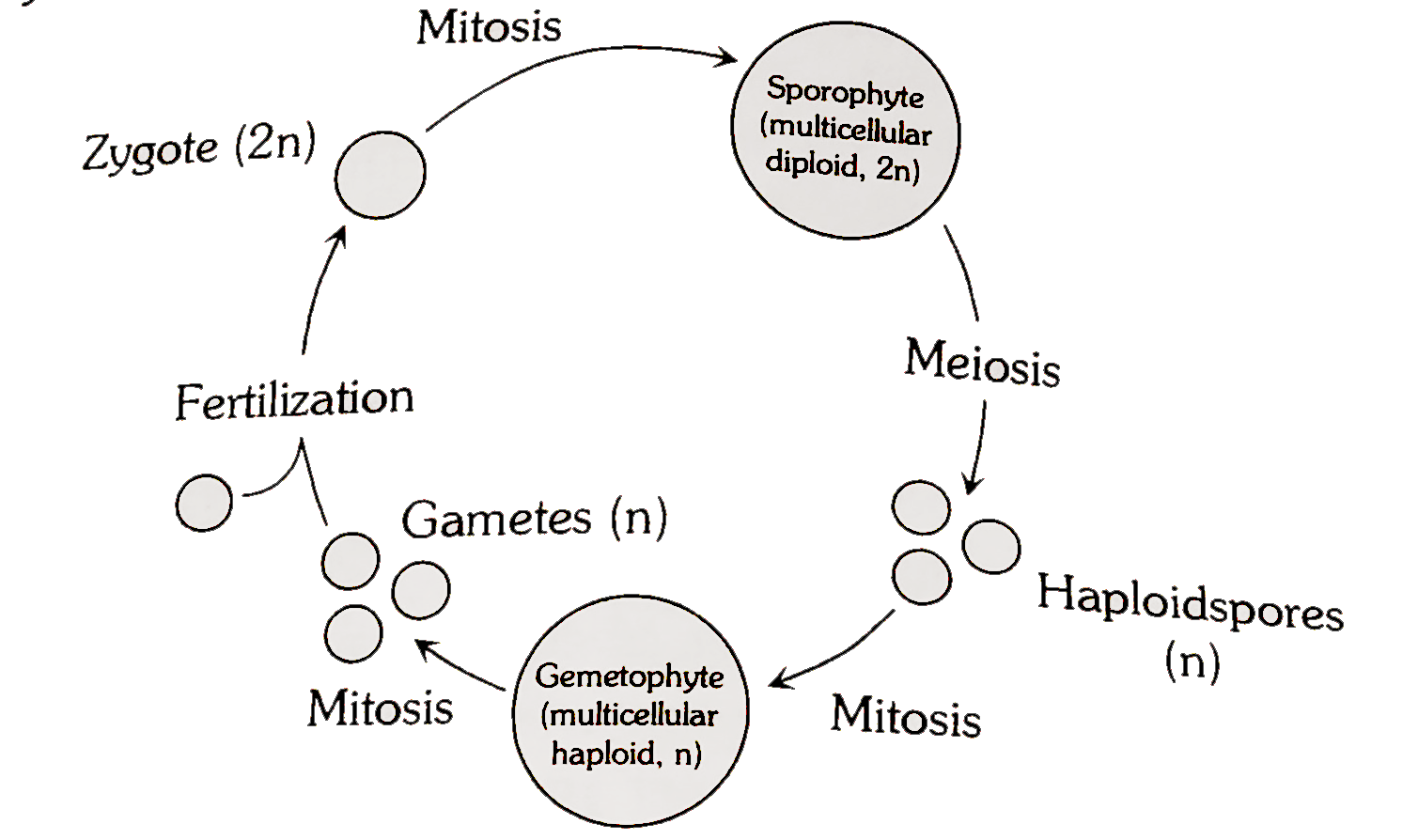In pteridophytes and gymnosperms, xylem consists of all except -
Vessel
Tracheid
Fibre
Parenchyma
The correct Answer is:A
To solve the question "In pteridophytes and gymnosperms, xylem consists of all except -", we need to analyze the components of xylem in these two groups of plants.
1. Understand the Components of Xylem:
- Xylem is a type of vascular tissue responsible for the transport of water and nutrients in plants. It typically consists of several types of cells, including vessels, tracheids, fibers, and parenchyma.
2. Identify the Groups of Plants:
- Pteridophytes (ferns and their relatives) and gymnosperms (like conifers) are two groups of vascular plants that have specific characteristics in their xylem structure.
3. Examine the Options Given:
- Option 1: Vessels - These are specialized structures for water transport, typically found in angiosperms (flowering plants).
- Option 2: Tracheids - These are long, narrow cells that help in water conduction and are present in both pteridophytes and gymnosperms.
- Option 3: Fibers - These provide structural support and are also present in both pteridophytes and gymnosperms.
- Option 4: Parenchyma - These are living cells that can store food and are found in the xylem of both pteridophytes and gymnosperms.
4. Determine Which Component is Absent:
- In pteridophytes and gymnosperms, vessels are not present. Instead, they primarily rely on tracheids for water conduction. Therefore, vessels are the only component listed that is not found in the xylem of these groups.
5. Conclude the Answer:
- The answer to the question is Option 1: Vessels.
Final Answer:
In pteridophytes and gymnosperms, xylem consists of all except vessels.
- Xylem is a type of vascular tissue responsible for the transport of water and nutrients in plants. It typically consists of several types of cells, including vessels, tracheids, fibers, and parenchyma.
- Pteridophytes (ferns and their relatives) and gymnosperms (like conifers) are two groups of vascular plants that have specific characteristics in their xylem structure.
- Option 1: Vessels - These are specialized structures for water transport, typically found in angiosperms (flowering plants).
- Option 2: Tracheids - These are long, narrow cells that help in water conduction and are present in both pteridophytes and gymnosperms.
- Option 3: Fibers - These provide structural support and are also present in both pteridophytes and gymnosperms.
- Option 4: Parenchyma - These are living cells that can store food and are found in the xylem of both pteridophytes and gymnosperms.
- In pteridophytes and gymnosperms, vessels are not present. Instead, they primarily rely on tracheids for water conduction. Therefore, vessels are the only component listed that is not found in the xylem of these groups.
- The answer to the question is Option 1: Vessels.
In pteridophytes and gymnosperms, xylem consists of all except vessels.
Similar Questions
Knowledge Check
- Question 1 - Select One
Angiospermic xylem consists of -
a) Vessels + Tracheids only
b) Tracheids + Fibres only
c) Vessel, tracheids, fibres and parenchyma
d) Parenchyma and fibres onlyAVessels + Tracheids onlyBTracheids + Fibres onlyCVessel, tracheids, fibres and parenchymaDParenchyma and fibres only - Question 2 - Select One
In pteridophytes, the xylem mainly consisits of
AvesselsBscleridsCtracheidsDall of the above - Question 3 - Select One
The given figure is showing life of bryophytes, pteridophytes and gymnosperms, what will be respective A and B in their life cycle
 A
A B
B C
C D
D
How are the male and female gametophytes of pteridophytes and gymnosperms different from each other ?
View SolutionXylem consists of mainly dead elements.
View SolutionThis is the figure showing life cycle of a plant If this belongs to life cycle of bryophytes, pteridophytes and gymnosperms, what will be respective A and B in their life cycle -
 View Solution
View SolutionSimilarity between pteridophytes and gymnosperms is in
View SolutionXylem in Gymnosperms lacks
View Solution

